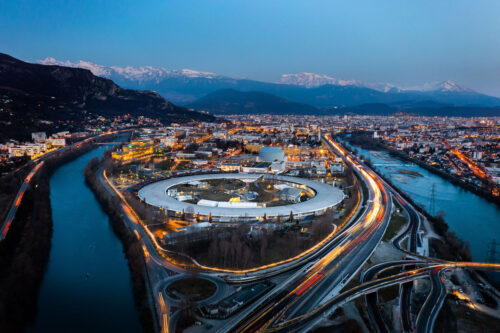The European Synchrotron

The ESRF, the European Synchrotron Radiation Facility, is the world’s most intense X-ray source and a centre of excellence for fundamental and innovation-driven research in condensed and living matter science. Located in Grenoble, France, the ESRF owes its success to the international cooperation of 21 partner nations, of which 13 are Members and 8 are Associates*.
The ESRF produces X-rays 100 billion times brighter than the X-rays used in hospitals. These X-rays, endowed with exceptional properties, are produced by the high energy electrons that race around the storage ring, a circular tunnel measuring 844 metres in circumference. The ESRF operates 46 ‘beamlines’, or laboratories, each equipped with state-of-the-art instrumentation, and managed by highly qualified scientific and technical experts.
Every year, around 10,000 scientists from ESRF’s 21 partner countries and beyond come to the ESRF to use its extremely brilliant X-rays for leading-edge research. This fundamental and applied research contributes to addressing the complex global challenges that our society faces, such as health, energy and the environment. It also contributes to the development of new technologies for industry and to preserving humanity’s cultural heritage, lighting the way to a sustainable and peaceful future.
The force of the ESRF is its capacity to innovate, pushing the limits and seeking ever-higher performances for the benefit of the global scientific community. In 2020, the ESRF opened a brand-new generation of high-energy x-ray source, ESRF-EBS (Extremely Brilliant Source), with X-ray performances multiplied by 100 compared to before. Selected as a Landmark in the European Strategy Forum on Research Infrastructures (ESFRI) Roadmap, ESRF-EBS hails a new era for X-ray science in imaging condensed and living matter, such as sub-cellular imaging of human organs, time-resolved serial crystallography, but also with applications for new sustainable materials for energy and industry, and the studies of key molecular components of our universe.
* France, Germany, Italy, United Kingdom, Russia, Spain, Switzerland, Belgium, The Netherlands, Denmark, Finland, Norway, Sweden are member countries. Israel, Austria, Poland, Portugal, Czech Republic, Hungary, India, South Africa are scientific associates.
